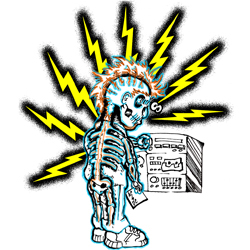“A cable is a source of potential trouble connecting two other sources of potential trouble.”
The humor in this statement may be lost on those who regularly assemble sound systems. But a reality of sound systems is that a signal accumulates noise as it flows through equipment and cables. And once noise contaminates a signal, it’s essentially impossible to remove it without altering or degrading the original signal.
For this reason, no system can be quieter than its noisiest link. Noise and interference must be prevented along the entire signal path.
Delivering a signal from one box to another may seem trivial, but when it comes to noise, the signal interface is usually the danger zone, not the equipment’s internal signal processing. Many – if not most – designers and installers of audio systems think of grounding and interfacing as a black art. How many times have you heard someone say that a cable is “picking up” noise – presumably from the air like a radio receiver?
Even most equipment manufacturers often don’t have a clue what’s really going on. The most basic rules of physics are routinely overlooked, ignored, or forgotten. As a result, myth and misinformation have become epidemic!
It’s time to replace myth, misinformation, and mystery with knowledge and clear understanding.
How Quiet Is Quiet?
Of course, how much noise and interference is tolerable depends on how a system is used. A monitor system in a recording studio obviously needs much more immunity to ground noise and interference than a construction site paging system.
The dynamic range of a system is the ratio, generally measured in dB, of its maximum undistorted output signal to its residual output noise or noise floor – up to 120 dB of dynamic range may be required in high-performance sound systems.
By the way, with video systems, a 50 dB signal-to-noise ratio is a generally accepted threshold beyond which no further improvement in images is perceivable, even by expert viewers.
Of course, a predictable amount of “white” noise is inherent in all electronic devices and must be expected. White noise is statistically random and its power is uniformly spread across the signal frequency range. In an audio system, it is heard as “hiss.” Excess random noise is generally due to improper gain structure, a topic that really isn’t part of our discussion here.
On the other hand, ground noise, usually heard as hum, buzz, clicks or pops in audio signals, is generally much more noticeable and irritating. (And note that 10 dB noise reductions are generally described as “half as loud,” while 2 dB to 3 dB reductions are “just noticeable.”)















